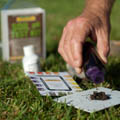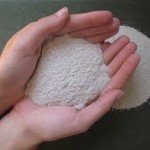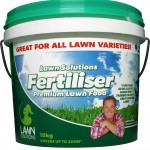 It may surprise some but it takes more than just sitting back and watching the grass grow to maintain a healthy lawn in the tropics. Even though the tropical climate provides a perfect environment for rampant lawn growth, watching the grass grow and grow and grow can be just as problematic and watching it dry off and die in more temperate climates.
It may surprise some but it takes more than just sitting back and watching the grass grow to maintain a healthy lawn in the tropics. Even though the tropical climate provides a perfect environment for rampant lawn growth, watching the grass grow and grow and grow can be just as problematic and watching it dry off and die in more temperate climates.
To ensure your lawn doesn’t resemble a jungle, it is important for regular maintenance throughout the year.
During the hot humid months, from November through to March, lawns are in their element as spectacular summer storms bring torrential rain. This usually means lush green leaf growth that, at times, appears to be out of control. Some good lawn maintenance can keep this rapid growth period at bay as well as maintain a green, healthy lawn during the cooler months.
During the wet season, fertilising is not recommended as it will promote vigorous leaf growth. More than likely you will already be watching your lawn grow before your eyes, yet be unable to mow due to the rain. Instead, apply lime and gypsum to the soil as these act as a soil conditioners. Lime keeps the pH up. Due to the region’s high rainfall, soil can become very acidic which can affect the health of the plant growth. By adding lime to the soil, this maintains a good pH balance and allows the turf to uptake soil nutrients. Completing a pH test and applying lime to correct the levels is the key to promoting healthy turf growth.
the wet season, fertilising is not recommended as it will promote vigorous leaf growth. More than likely you will already be watching your lawn grow before your eyes, yet be unable to mow due to the rain. Instead, apply lime and gypsum to the soil as these act as a soil conditioners. Lime keeps the pH up. Due to the region’s high rainfall, soil can become very acidic which can affect the health of the plant growth. By adding lime to the soil, this maintains a good pH balance and allows the turf to uptake soil nutrients. Completing a pH test and applying lime to correct the levels is the key to promoting healthy turf growth.
 Gypsum is a clay breaker. One of the reasons soil is compacted and like concrete in most backyards is due to initial building activity. Usually, top soil is taken away during home construction and the ground is compacted making it difficult for water to penetrate the soil. Gypsum is good for breaking down clay soils enabling the water to penetrate, so when using a shovel to dig a hole for the Golden Cane you will probably regret later, it won’t bounce back and hit you in the head to say “I told you so…….”
Gypsum is a clay breaker. One of the reasons soil is compacted and like concrete in most backyards is due to initial building activity. Usually, top soil is taken away during home construction and the ground is compacted making it difficult for water to penetrate the soil. Gypsum is good for breaking down clay soils enabling the water to penetrate, so when using a shovel to dig a hole for the Golden Cane you will probably regret later, it won’t bounce back and hit you in the head to say “I told you so…….”
(for more about using Gypsum, check out this handy video)

Another wet-weather-must is to keep lawn mowing equipment in good working order. There is nothing worse when there is a break in the weather and you are unable to mow because of failing lawn equipment due to poor maintenance. Be prepared by having mowers and whipper snippers fuelled and ready to go. Sharp mower blades are essential to ensure the lawn has a sweet, even cut. Unbalanced, blunt blades often leave the turf looking hacked and untidy.Think back to those home haircuts with blunt clippers when your mother hacked into your hair, accidentally shearing the top of your left ear leaving you bloodied and permanently scarred. The success to even tidy lawns is for weekly trims in the summer months. This will keep lawn clipping to a minimum. During the winter months mow every 2 to 3 weeks to keep lawns tidy.

After the wet season around April, this is the time to apply good quality slow release fertiliser to keep the lush growth that has been kept in check during the wet season. Once you have applied fertiliser, water in well as this will keep that thick leaf cover, reduce moisture loss and keep your lawn actively growing. Pull the mower deck up one notch to leave more leaf on the grass, as this will also help reduce moisture loss within the soil.
In May, reapply slow release fertiliser before winter sets in. This is a must-do job as it will keeplawns green and healthy throughout the tropic’s mild winter. Depending on the turf variety, water weekly or fortnightly. This watering method is better than small top ups every night as it promotes the deep root system needed for a healthy lawn.
August is another good time to apply slow release fertiliser as it will help the recovery from the winter months. Again, a good, deep watering is required. Now is the time to lower the mower deck back to the summer mowing height.
With September comes spring and a burst of activity. Birds are building nests, flowers are blooming and army worms are grouping ready to launch their attack on lush green lawns. In survival mode, the army moths will lay eggs where their offspring will survive and flourish. Healthy green lawns are perfect egg sites. Grub Guard should be on hand during spring time to counter attack and ensure a year-round healthy lawn.



